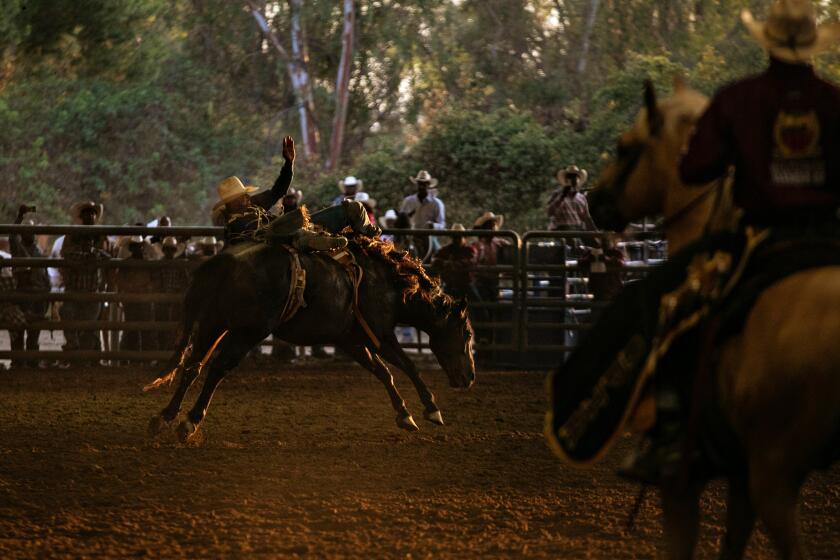L.A.’s rodeo ban stirs a cultural backlash. The city still moves to crack down — with these exceptions
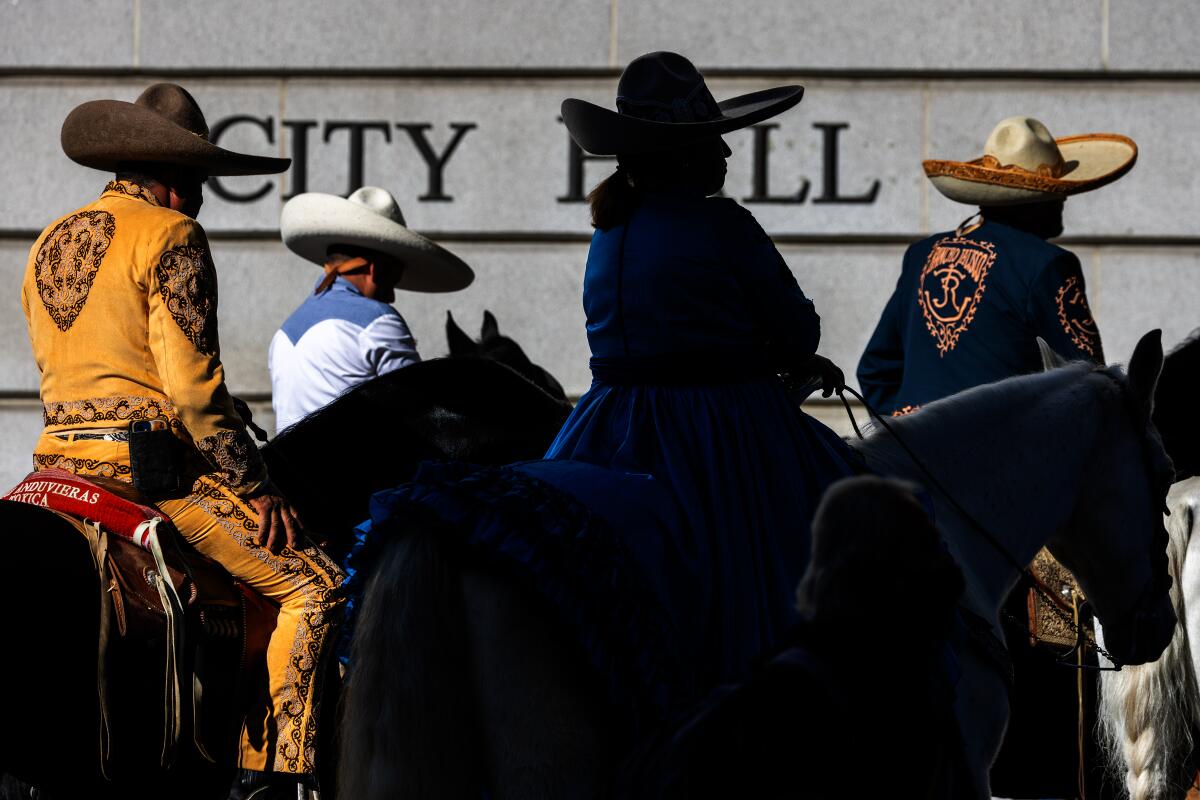
- Share via
The Los Angeles City Council voted unanimously Tuesday to ban rodeos in the city despite opposition by some in L.A.’s Latino equestrian community, who painted the crackdown as an attack on their culture.
Councilmember Bob Blumenfield, who represents the west San Fernando Valley, led the council in passing the ban, describing in graphic detail the broken bones and pain endured by rodeo animals.
The vote, which passed 14 to 0 with Councilmember Nithya Raman absent, asks the city attorney’s office to draft an ordinance outlawing rodeos in the city.
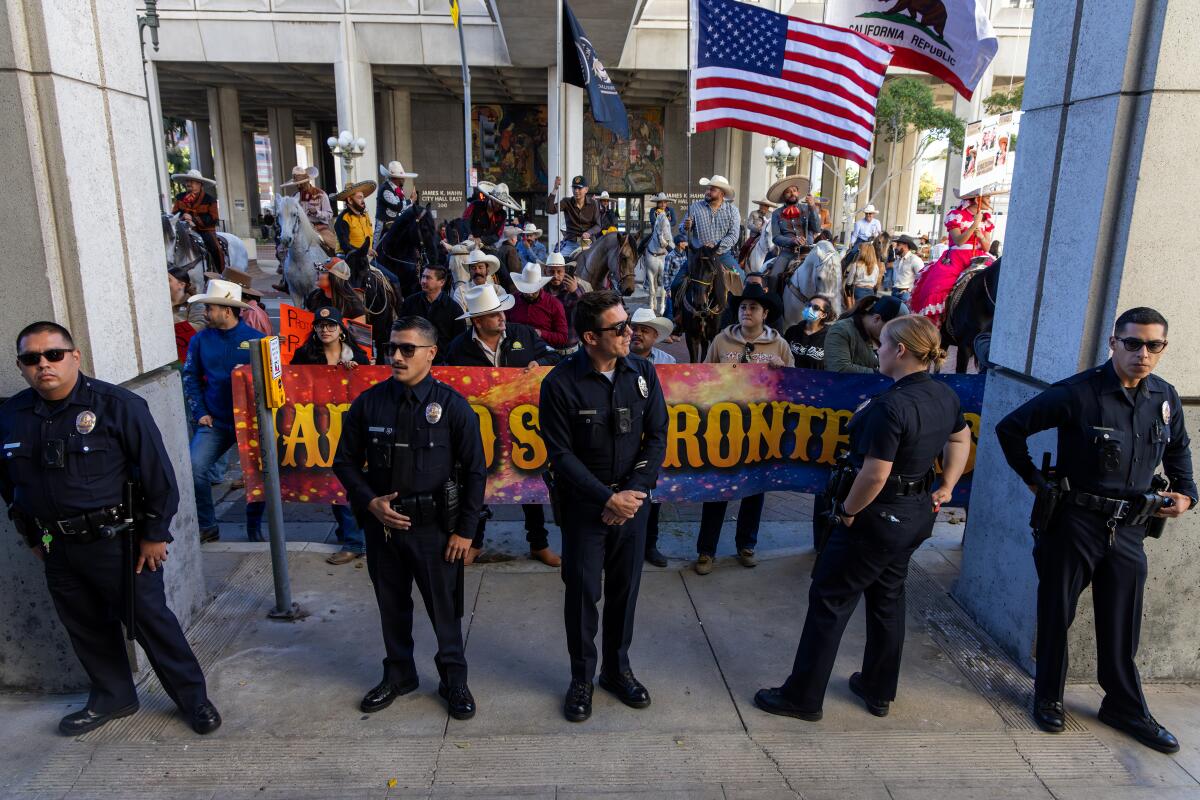
Just before the vote, Blumenfield introduced an amendment that was co-sponsored by the most vocal public opponent of the measure, Councilmember Monica Rodriguez, who represents the east Valley.
The amendment — a combination of two separate amendments, one written by Blumenfield, the other by Rodriguez — attempted to assuage concerns that the ban would prevent cultural events such as charrería, which is popular in Mexico, as well as the Bill Pickett Rodeo, a national event for Black riders scheduled for February in the City of Industry.
It carved out exceptions for equestrian and cultural events, including charrería, as long as participants don’t engage in events where there is bareback bronc riding, saddle bronc riding, bull riding, calf roping, steer wrestling, team roping or anything involving “physically taking down an animal,” “roping an animal” or “attempting to ride a bucking animal.”
Just before the council meeting, Rodriguez appeared at an anti-ban rally, where dozens of rodeo aficionados — some on horses, some wearing traditional rodeo attire — trotted up and down Main Street outside City Hall.
‘In these spaces, it’s safe to be us’: California’s Black trail riders, rodeo stars and ranchers find fellowship and spiritual freedom in rural traditions.
At a news conference before the vote, Rodriguez said the proposed ordinance would be “far more inclusive and impactful to communities of color and cultural practices that have long been treasured here.”
More than 100 people signed up to speak in council chambers before the vote, many wearing cowboy hats and boots.
Jane Velez-Mitchell, a resident of Los Angeles, expressed outrage that concern for animals was pitted against cultural sensitivity.
“I was appalled and assaulted and just baffled that pro-rodeo forces are trying to turn this into a cultural issue. As a proud Latina, I can tell you that I know that torture is not entertainment,” she said during the public comment period.
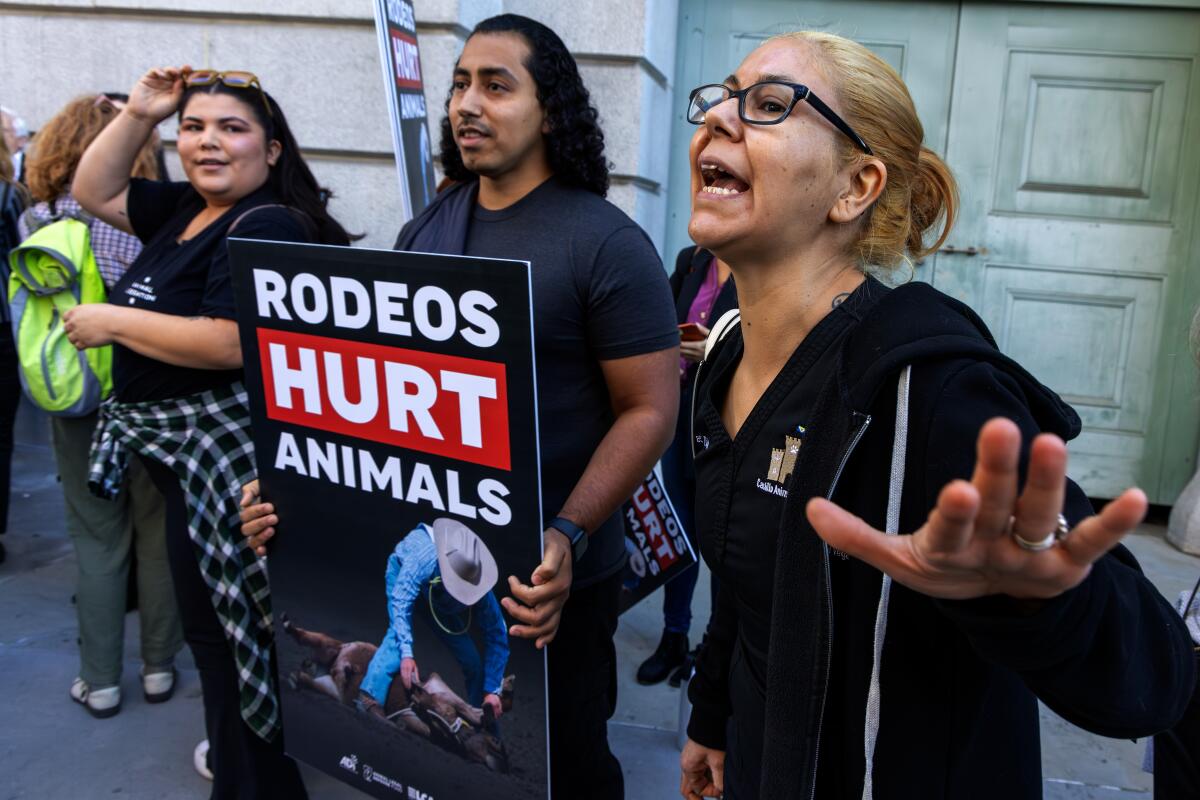
A caller who did not identify himself pleaded in a quavering voice for the council to oppose the ban.
“I am a proud Angeleno. I was born and raised here. My father rode bulls here, my uncle rode bulls here, and those animals are not abused,” he said. “As an African American born and raised in the city of Los Angeles, please do not ban rodeo.”
A rodeo ban was first proposed by Blumenfield in 2021.
“These animals aren’t part of a show — their torture is the show,” Blumenfield said in an interview Monday. People are being entertained by witnessing animals writhing in pain because a flank strap is tightly wrapped around their belly, he said.
Other jurisdictions throughout the state and nation have put limits on or banned rodeos, including San Francisco, San Juan Capistrano and Pasadena, as well as Pittsburgh; Baltimore County, Md.; Leesburg, Va.; and Fort Wayne, Ind.
California law already regulates rodeos, requiring a veterinarian to be present or nearby and on call. Injury reports must be sent to the state’s Veterinary Medical Board.
A 2022 Times review of those reports showed that since 2001, when the law went into effect, more than 125 animal injuries were reported. The reports were written by attending or on-call veterinarians and submitted to the California Veterinary Medical Board.
The reports documented injuries including superficial abrasions suffered as panicked animals rushed out of their chutes, as well as crushed skulls, broken legs, gored flanks and snapped spines.
Experts, activists and records prepared by veterinarians at events say these numbers are likely conservative and underrepresent the extent of injuries that happen at rodeos.
The president of the Los Angeles Equine Advisory Committee warns of unintended consequences from the city’s proposed rodeo ordinance.
In response to concerns that a ban would be akin to an attack on Latino culture, Blumenfield said, “This is not about culture. This is about animal cruelty.”
“There are Black rodeos. There are Latino rodeos. There are gay rodeos ... nobody is trying to go after a culture. We’re saying that animal cruelty is something that we, in 2023, should not be supporting,” he said.
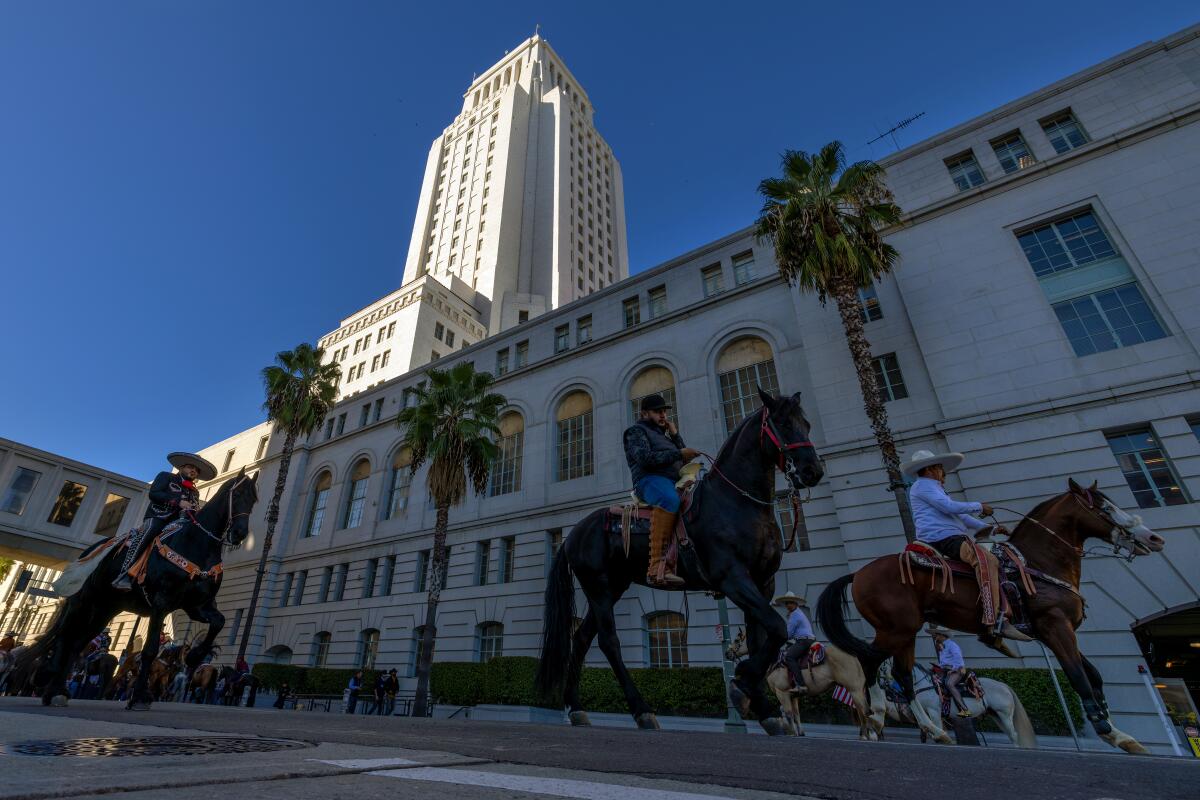
Opponents said that they would seek to alter the law when it returns to the City Council for a final vote.
Rodriguez and Councilmember John Lee, who represents the northwest San Fernando Valley, suggested at Tuesday’s meeting that many in L.A.’s equestrian community weren’t consulted on the proposed rodeo ban.
A spokesperson for Lee said the councilman would discuss the new rules when the draft ordinance returns to the city’s Neighborhoods and Community Enrichment Committee.
“Similar to any potential legislation, the committee can deliberate and make changes as they see fit,” said Roger Quintanilla, Lee’s spokesperson.
Blumenfield said that although discussion was routine in these circumstances, Lee “and everyone else is on record as voting to ban the rodeo in the way that we’ve asked the city attorney to draft it.”
“So, he has a little bit of a higher hill to climb if he wants to try to change that,” Blumenfield said. “If he’s committed to trying to change it, he can offer up amendments.”
Longtime equestrian Geronimo Bugarin said there are nine elements of charrería, including bull riding, mare riding and calf roping, and appeared dismayed at the prospect of not being able to continue those activities.
“If we lose one of our key elements of charrería, it’s like you don’t have a charrería,” he said.

